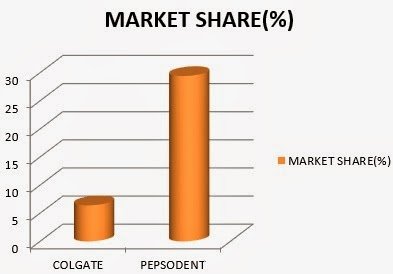Credit Market:
The key objective is to efficiently allocate savings to productive sectors of the economy. Starting early saw the introduction of a liberalized regime to increase efficiency and reduce net performing assets ( NPA’s) in the banking sector. Interest rates were deregulated and entry of new private sector banks was allowed, besides enhanced presence of foreign banks. On the front of governance, accounting standards and disclosure norms were strengthened (compliance with SOX) permitted to raise capital from market,increasing market discipline,enhanced competition leading to gains in productivity. Risk management in terms of credit risk ,market risk and operational risk have begun to be addressed in compliance with Basel Convention with a deadline of March 31,2008.
Credit off-take has expanded rapidly from fiscal 02-03 onwards, led by revival of investment demand, moderate interest rates, decline in NPA’s and credit expansion is post conversion of 2 major development financial institutions ( DFI) into banks. The credit intensity of agriculture sector has gone up in recent years.

However the credit to industry from 1990 onwards is lower than the 1980’s, presumably due to alternative avenues of financing like ECB’s and domestic/international capital markets, in view of improved sovereign credit rating and more globally integrated industry segments. Corporate profitability has also gone up significantly in recent years thus leading to more internal generation of funds. There has been a sharp increase in medium/long term project funding, thus banks have filled the gap of the 2 DFI’s in this regard.Credit growth to the small scale sector (SSI) has also picked up from 04-05 and this sector being a major contributor to export volume is good for economic growth.
Key factors for rapid credit expansion is offtake from sectors like housing, personal loans being facilitated by benign interest rates ( hardened in the near term), fiscal benefits, increasing disposable income and growing competition in banking sector and also upsurge in non banking finance companies ( NBFC). Household credit portfolio is almost 25% of total bank credit . There is a need to increase credit flow to those sectors which need more assistance and directly or indirectly associated with majority of the population, like agriculture, SME’s, rural artisans & handicraft sector as also the underserved sectors of society where self help groups ( SHG) and microfinance institutions (MFI) need better bank linkages to broadbase credit flow and foster entrepreneurship .For all this to happen banks need to reduce transaction cost (and dependence on collaterals) by alternate delivery channels offered by information technology and more innovative means like corporate retail initiatives. IT implementation in underserved societies has limitations due to low literacy and lack of technology orientation.
Finally in the transition period of improving literacy and income levels, there would be a need for credit counseling institutions to educate individuals to mitigate bankruptcy risks. This has been already initiated by one of the banks,Bank of India on a pilot project scale and should see far more traction in the days to come.
Government Securities market:
A well developed and liquid government securities market is important to finance the deficits and reduce the cost of government market borrowings, at the same time setting a benchmark for other debt instruments. The Government securities market plays a key role for effective transmission of monetary policy impulses in a deregulated environment.
To develop the government securities market and widen the investor base, it was necessary to migrate from a regime of administered interest rates to a market oriented system. Accordingly in early 90’s an auction system screen based and anonymous trading and reporting platform was introduced ( enabling electronic bidding in primary auctions)Inediaries in form of primary dealers ( PD) was developed, thus facilitating central bank’s withdrawal from primary market from April 2006 as per FRBM Act ( Fiscal responsibility and budget management Act) to deepen the market , other measures like “short selling” of government securities and consolidation of government debt through buy back were introduced. Furthermore setting up of CCIL ( Clearing corporation of India Ltd), an efficient settlement mechanism has been institutionalized,imparting considerable stability to the government securities market.
The PD system was conceived for institutions whose basic interest was not to hold government securities but to participate in primary auctions to act as market makers in the secondary market,and ensure success of primary auctions. The PD system has facilitated better distribution of primary auctioned stock while providing better liquidity in the secondary market.The holding pattern of government securities shows a shift in the last decade from banks to non banks, essentially insurance companies who hold long dated papers ,reflecting progressive diversification in investor base. The settlement and trading infrastructure has also resulted in increased activity and liquidity,and smooth financing of government debt even when their fiscal deficits were high and rising.
The system of automatic monetization through ad hoc treasury bills was replaced by Ways and Means Advances in 1997, because of which Government resorted to increased market borrowings to finance its deficit,thus significantly increasing the size of this market over the last decade.
(Remaining parts of this article will be posted in subsequent parts)
[The article has been written by Amit Gupta. He is a strategic management consultant with interest in teaching, corporate training and business planning for start-ups. He also focuses on setting up projects in the skill development domain.]
You might like reading:

Tete-a-Tete with Aakanksha Singh, MBA turned Actor on her journey so far
We recently connected with Aakanksha Singh who holds an MBA from NMIMS Mumbai and is presently a full-time actor and anchor by profession about her journey so far. IdeasMakeMarket feels privileged to share the discussion with our readers. Q1. Tell us something about your journey so far? My journey has been a roller coaster ride since I started working in […]

Colgate vs. Pepsodent brand war – competitive advertisement trending again?
Let us first understand what a brand is: The American Marketing Association defines a brand as a “name, term, sign, symbol, design or a combination of them, intended to identify the goods or services of one seller or group of sellers and to differentiate them from those of competitors.” Pepsodent and Colgate – Market Positioning While Pepsodent germi-check has […]































